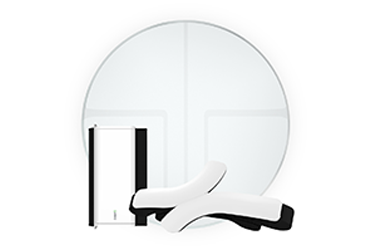In the United States alone, every 42 seconds someone experiences a heart attack. As the leading health concern across the world, understanding the causes of a heart attack and recognizing its warning signs can be a life-saving knowledge as an early intervention is the key surviving and recovering from such a major health event. Learn the basic of a heart attack here.
What is a heart attack?
A heart attack, in medical terms also called myocardial infarction, is a serious medical emergency where the coronary artery that supplies the heart muscle with blood is completely or partially closed by a blood clot. As the heart loses blood supply and oxygen, part of the muscle can die or get damaged, causing chest pain and instability in the electrical activity of the heart muscle tissue. The most serious complication of a heart attack is the occurrence of a rhythm disturbance in the heart, also called ventricular fibrillation, that can lead to cardiac arrest. A cardiac arrest is when the heart malfunctions and stops beating unexpectedly.
What are the risk factors for a heart attack?
The risk of having a heart attack increases when a man is 45 and a woman is more than 55. There are many different elements increasing the risk of being victim of a heart attack, such as high blood cholesterol levels, unhealthy dieting, diabetes, heart surgery, overweight, hypertension, foregoing history of heart attack, being inactive, smoking and stress.
What are the warning signs of a heart attack?
The majority of patients undergoing a heart attack experience severe chest pain that can radiate to the jaw or limbs, usually the arms. But some warning signs can be of a much milder nature such as nausea and vomiting, breathlessness dizziness and fainting tendency.
How do you treat a heart attack?
There are two ways to treat a heart attack: medication based and procedure based.
The first, medication based method of treating a heart attack is thrombolysis, also known as the clot buster. It involves a procedure where the paramedic or doctor will inject medicine into a vein to soften the blood to reestablish blood supply to the heart. This treatment can be started in the ambulance.
The other method is primary percutaneous coronary intervention (PPCI) where the doctor opens the blocked coronary artery, reinstating blood supply to the part of the heart that is lacking blood. This method saves as much of the heart muscle as possible but as it is surgery, this treatment can only be done in the hospital.
How to prevent a heart attack?
Lifestyle choices play a significant in overall heart health. Eating healthy, staying active and maintaining a healthy weight are all proven to lower the risk of heart disease and heart attack. Also monitoring one’s blood pressure, especially for those over the age of 50 and with a family history of heart problems, as heart attack is a progressive health issue. Build up around arteries can be detected through routine health monitoring and intervention can prevent a potential heart attack.
It is never too early or too late to start looking after your heart or the heart of your loved ones. Qardio digital devices make it easy to look after your health and keep your doctor in the loop between visits. If you haven’t already discovered the health benefits of our products, find more information about QardioArm, our wireless blood pressure monitor, QardioBase, award-winning smart scale and body analyzer and QardioCore, the world’s first wearable ECG designed for an active lifestyle.
Sources:
Mayo Clinic
Medical News Today




